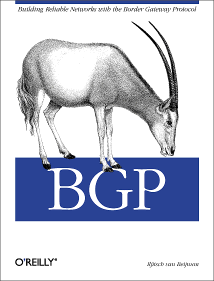
|

|

|
|
Home ·
BGP Expert Test ·
What is BGP? ·
BGP Vendors ·
Links ·
Archives ·
Books ·
My New BGP Book | ||
 (advertisement)
(advertisement)
| ||
|
IPv6 debate, better routing? (posted 2003-05-23)
Geoff Huston, member of the Internet Architecture Board, wrote as one of his monthly columns for the Internet Society Waiting for IP version 6. In this column Geoff argues that the only real advantage IPv6 has over IPv4 are the larger addresses, but we are not very close to running out of IPv4 address space yet with 1.5 billion addresses still unallocated. So he expects demand for IPv6 will not be driven by anything or anyone that's online now but rather by the tons of new devices that need connectivity in the future. The IPv6 Forum doesn't quite agree and, in the persons of Latif Ladid and Jim Bound, sent in a response. They argue IPv6 does have some additional features that make it better than IPv4, such as the flow label, for which there is currently no use defined but it could help quality of service efforts, stateless autoconfiguration and routing scalability. They do have a point here. Sure, in IPv4 you can use DHCP and you're online without having to configure an address and additional parameters. However, there must still be a DHCP server somewhere. These days, DHCP servers are built in pretty much anything that can route IP or perform NAT. This works quite well for numbering hosts that act as clients, but it doesn't really help with servers because in order to have a DHCP server give out stable addresses it must be configured to do so. This is only slightly better than having to configure the host itself. In IPv6, this is only a problem in theory. IPv6 stateless autoconfiguration makes a host select the same address for itself each time, without the need to configure this address either on the host or on a DHCP server. The theoretical problem is that some other host may select the same address because of MAC address problems (as the lower part of the address is derived from the MAC address) but this should be extremely rare. Routing is the same for IPv6 as for IPv4. Both use provider aggregation to limit the number of routes in the global routing table. However, address conservation in IPv4 makes it necessary to make these provider blocks much smaller than is desirable from a routing aggregation standpoint. In IPv4, ISPs get /20 blocks and only the ones using up address space really fast get /16 blocks. In IPv6, every ISP gets at least a /32 and the next seven /32s remain unallocated so this can grow to a /29 (at least in the RIPE region) so ISPs need far fewer individual blocks to assign address space to their customers. This should help with route scaling. Unfortunately, it doesn't help with customers who are multihomed. But that's another story.
|
